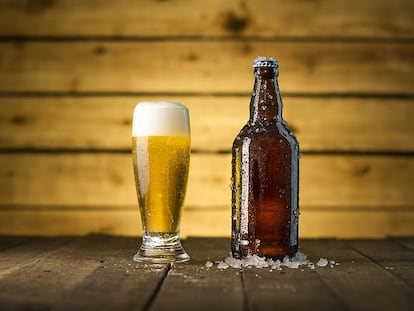‘Vière’: The drink combining the best parts of beer and wine that Paris adores
The beverage of the moment in France is no mere cocktail, but rather a concoction achieved through fermenting a blend of beer wort and wine must. It seems to be just the beginning of a new world of gastronomic crossbreeding
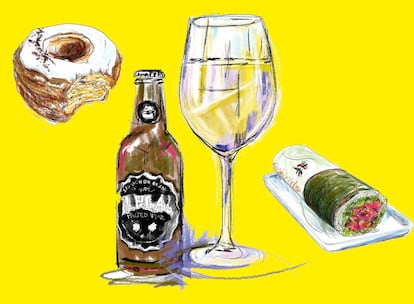
For those who have trouble distinguishing between the phonetics of b and v, ordering a vière in Paris can be a discouraging task. Most likely, the waiter will wind up bringing a beer to the table. One must insist that what is required is not a bière (beer) but rather a vière (expressed via the labiodental articulation), the new drink of the month in the French capital.
This is not an invention that one might replicate at home by mixing equal parts of beer and wine, but instead a French creation inspired by Italian grape ale. It is made by fermenting a blend of beer wort, acidifying it with lactic acid bacteria, and wine must, as explained by beermaker Gabriel Frelet, who is behind the brand Gallia París. His company debuted the drink four years ago.
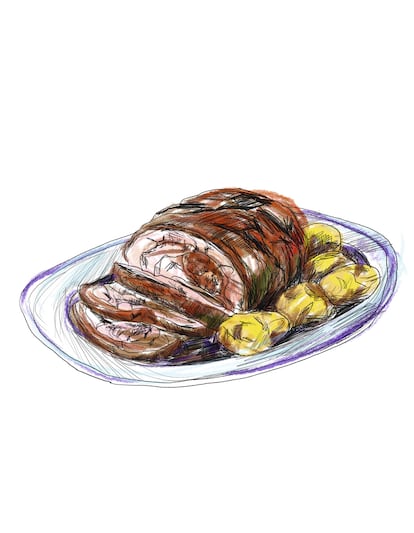

“It’s an incredibly innovative product, but it has historical origins. We make a co-fermentation of beer’s acid wort and wine must. When it begins to ferment, we mix them together and achieve a product that has many of the characteristics of wine and some of beer,” Frelet explains to EL PAÍS. He has taken over the position once held by Rémy Maurin, who created vière in a historic Parisian brewery that was salvaged in 2009 by Guillame Roy and Jacques Ferté, two beer fanatics who at the time were 26 and 27 years old.
Their idea was to reclaim the late 19th century logo of the brewery, which closed down in the 1960s, and give Paris its own beer, following the example of the country’s other regions, where local beers have become popular in recent years. It’s a reflection of the times when it comes to beverages in France: while red wine consumption has been in decline for years, that of beer is on the rise, and hit a yearly average of 8.7 gallons in 2021, compared to nearly eight in 2015. According to a study by the consulting firm Xerfi, the majority of these figures in France are due to the consumption of artisan beers.
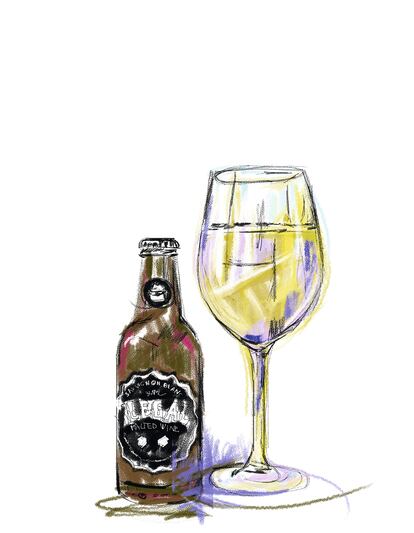
This is where Gallia comes in, having spent a decade exploring the possibilities of beer, just like Rémy Maurin and his successor Gabriel Frelet. All of them are tired of the phrase popularly accredited to the French, “I don’t really like beer.” “Beer has an enormous organoleptic palette, a gigantic aroma and we can have a lot of fun with the variety of things that can be done with it. I hope that in ten years we won’t have to hear anyone say they don’t like beer.”
Viére looks more similar to a sparkling wine, and it comes in as many varieties: red, white, orange or rosé. Its creators insist that it’s not an aromatic beer, but rather a product with its very own characteristics, which you can enjoy in a similar fashion to wine and is sold in a bottle like wine, with a colorful and Instagrammable appearance that has contributed to its success. Each variety has its own process of fermentation, with grapes that come from vineyards in various regions of France (mainly Alsace in 2023).

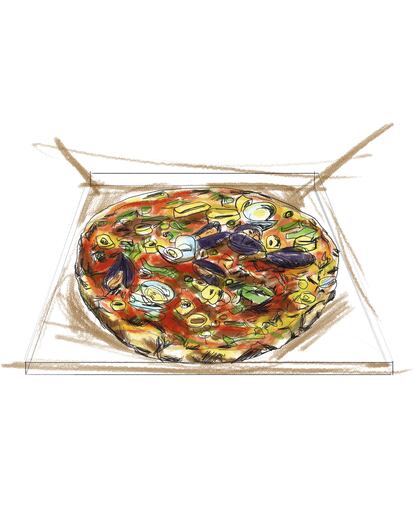
The harvest that just arrived at Gallia’s factory in Pantin, on the outskirts of Paris, will go on sale starting in April in select grocery stores, now that its owners are capable of explaining the drink’s peculiarities, but also in the bars and hotels of the capital and its region. Although they export to wine sellers in Denmark and England, Paris represents the bulk of sales (they make deliveries by bicycle), and they send it by mail to the rest of France. In 2021 and 2002 they produced, respectively, 17,000 and 10,500 gallons of the juice.
Trend eaters
Someone who is entirely unsurprised by the success of this beverage is Sacha Abergel, founder of the gastronomic firm Foodies consulting, and professor of higher education in hotels and restaurants. The restaurant business experiences constant plot twists: one must produce, innovate, make noise and stand out from the competition. This sets the scene for an ongoing search for originality and a willingness to mix influences. The consultant uses as examples the combination of sushi and the burrito (the sushirrito), the croissant and the donut (the cronut), and the latest hamburger spot to come into fashion in Paris, Bomaye, which makes hamburgers with touches of African cuisine.
The trend “will continue and accelerate in a globalized world that has a constant thirst for ethnic and foreign food,” says Abergel, for whom Gallia’s creation highlights the fact that the appetite for novelty has also arrived to beverages. It’s a trend that the most orthodox in the kitchen view with distrust, and we have already seen the impact that fusion has had on the so-called traditional bourgeois cuisine. In the case of drinks, the lack of modernization among the producers of red wine in Bordeaux has already demonstrated that the motto of “reinvent or die” applies more strongly than ever to the industry. The region’s winegrowers demanded aid this year to uproot up to 10% of their vineyards, faced with this decline in red wine consumption and exports, a market on which the region had focused without paying much mind to the sector’s latest trends.
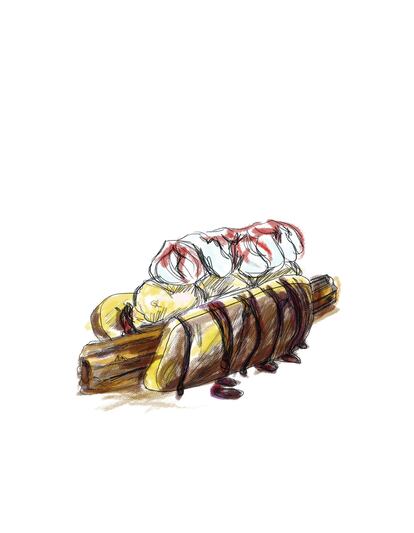
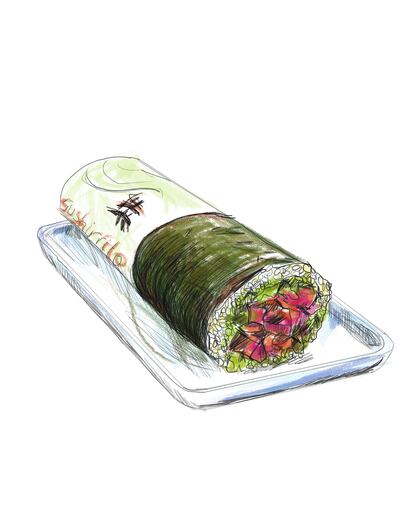
At the moment, Gallia París is the only brewery that works with vière as such, although in the United States, interaction between the much larger wine and beer sectors has given rise to a broader market of similar combinations. In 2022, the Parisian brewery also launched the Vière Festival, centered on hybrid beverages, which also includes cider and sake. “When artisan beverage producers get together it’s fantastic, and we want to develop that synergy,” sums up Frelet. “Right now we are collaborating with a French sake producer, and that helps us to learn more about fermentation, a complex and mysterious process. This is how we enrich our profession.”
Sign up for our weekly newsletter to get more English-language news coverage from EL PAÍS USA Edition
Tu suscripción se está usando en otro dispositivo
¿Quieres añadir otro usuario a tu suscripción?
Si continúas leyendo en este dispositivo, no se podrá leer en el otro.
FlechaTu suscripción se está usando en otro dispositivo y solo puedes acceder a EL PAÍS desde un dispositivo a la vez.
Si quieres compartir tu cuenta, cambia tu suscripción a la modalidad Premium, así podrás añadir otro usuario. Cada uno accederá con su propia cuenta de email, lo que os permitirá personalizar vuestra experiencia en EL PAÍS.
¿Tienes una suscripción de empresa? Accede aquí para contratar más cuentas.
En el caso de no saber quién está usando tu cuenta, te recomendamos cambiar tu contraseña aquí.
Si decides continuar compartiendo tu cuenta, este mensaje se mostrará en tu dispositivo y en el de la otra persona que está usando tu cuenta de forma indefinida, afectando a tu experiencia de lectura. Puedes consultar aquí los términos y condiciones de la suscripción digital.
More information
Archived In
Últimas noticias
Most viewed
- Sinaloa Cartel war is taking its toll on Los Chapitos
- Oona Chaplin: ‘I told James Cameron that I was living in a treehouse and starting a permaculture project with a friend’
- Reinhard Genzel, Nobel laureate in physics: ‘One-minute videos will never give you the truth’
- Why the price of coffee has skyrocketed: from Brazilian plantations to specialty coffee houses
- Silver prices are going crazy: This is what’s fueling the rally
